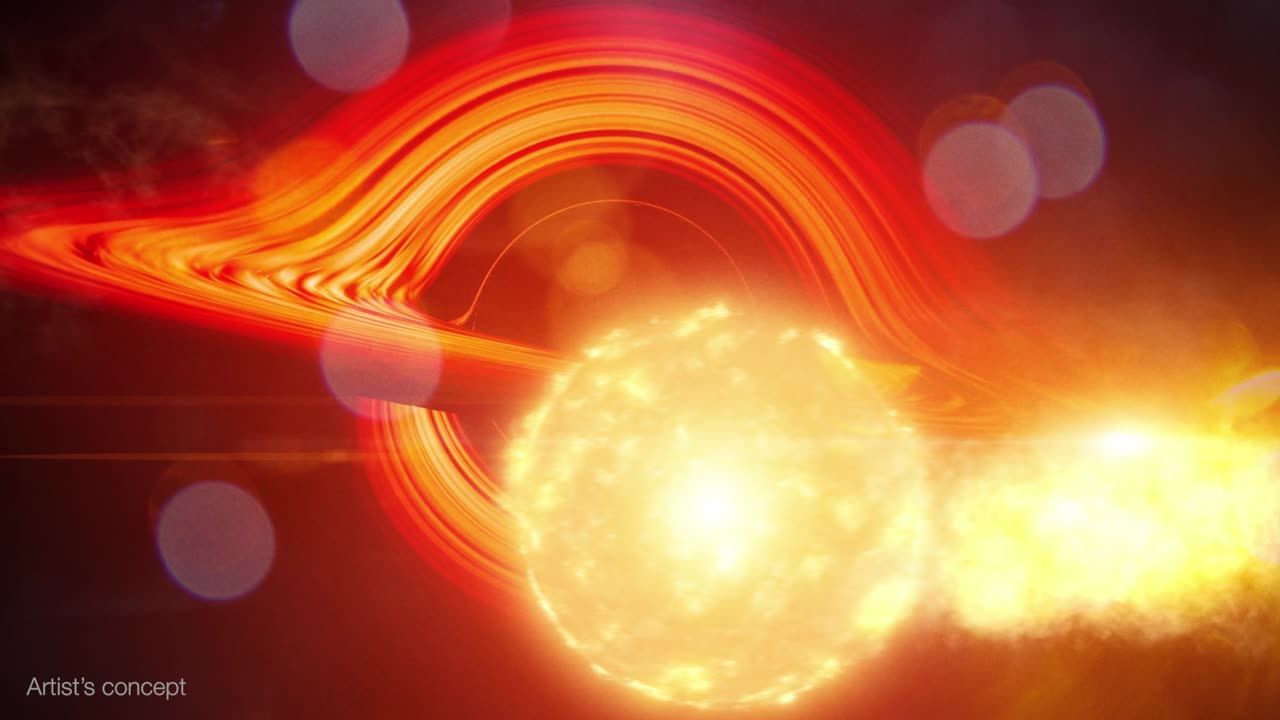Premium Only Content

Swift Utilizes Innovative Technique to Detect a Feeding Black Hole
Watch to learn how an update to NASA’s Neil Gehrels Swift Observatory allowed it to catch a supersized black hole in a distant galaxy munching repeatedly on a circling star.
Using NASA’s Neil Gehrels Swift Observatory, which launched in 2004, scientists have discovered a black hole in a distant galaxy repeatedly nibbling on a Sun-like star. The object heralds a new era of Swift science made possible by a novel method for analyzing data from the satellite’s X-ray Telescope (XRT).
When a star strays too close to a monster black hole, gravitational forces create intense tides that break the star apart into a stream of gas. The leading edge swings around the black hole, and the trailing edge escapes the system. These destructive episodes are called tidal disruption events. Astronomers see them as flares of multiwavelength light created when the debris collides with a disk of material already orbiting the black hole.
Recently, astronomers have been investigating variations on this phenomena, which they call partial or repeating tidal disruptions.
During these events, every time an orbiting star passes close to a black hole, the star bulges outward and sheds material, but survives. The process repeats until the star looses too much gas and finally breaks apart. The characteristics of the individual star and black hole system determine what kind of emission scientists observe, creating a wide array of behaviors to categorize.
On June 22, 2022, the XRT captured Swift J0230 for the first time. It lit up in a galaxy around 500 million light-years away in the northern constellation Triangulum. Swift’s XRT has observed nine additional outbursts from the same location roughly every few weeks.
Scientists propose that Swift J0230 is a repeating tidal disruption of a Sun-like star orbiting a black hole with over 200,000 times the Sun’s mass. They estimate the star loses around three Earth masses of material on each pass. This system provides a bridge between other types of suspected repeating disruptions and allowed scientists to model how interactions between different star types and black hole sizes affect what we observe.
Swift J0230’s discovery was possible thanks to a new, automated search of XRT observations called the Swift X-ray Transient Detector.
Credit: NASA’s Goddard Space Flight Center
-
 LIVE
LIVE
The Charlie Kirk Show
1 hour agoCharlie's Last Trip + What's Next + AMA | Erika Kirk, Mikey McCoy | 9.26.2025
12,140 watching -
 1:57:37
1:57:37
Tucker Carlson
13 minutes agoCharlie Sheen’s Craziest Hollywood Stories and Why He Refuses to Believe the Official Story of 9/11
1 -
 LIVE
LIVE
Sean Unpaved
1 hour agoRyder Cup Tee-Off, CFB's Week 5 Madness, & the NFL's Win-or-Wilt Week 4
98 watching -
 2:07:01
2:07:01
The Culture War with Tim Pool
2 hours agoWho Really Killed Charlie Kirk? Truth Behind Kirk Assassination | The Culture War with Tim Pool
111K108 -
 LIVE
LIVE
Side Scrollers Podcast
2 hours agoUK Introduces MANDATORY Digital ID + Dallas ICE Shooting BLAMED on Gaming + More | Side Scrollers
559 watching -
 LIVE
LIVE
Dr Disrespect
1 hour ago🔴LIVE - DR DISRESPECT - ARENA BREAKOUT: INFINITE - STORM EVENT
1,335 watching -
 LIVE
LIVE
Lara Logan
11 hours agoTHE REMNANT RISES: Matt Shea & The New Generation of Pastors on Fire for God & Country | Episode 37
167 watching -
 LIVE
LIVE
Nikko Ortiz
4 hours agoADHD, Crashouts, and Karens - Rumble LIVE
311 watching -
 49:21
49:21
Steven Crowder
3 hours agoWhy She's Wrong and other Life Advice from Steven Crowder
151K92 -
 48:24
48:24
The Rubin Report
2 hours agoPress Stunned by Trump’s Brutally Honest Reaction to James Comey Question
28.6K10